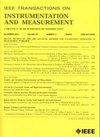Parallelization Strategy of Laser Stripe Center Extraction for Structured Light Measurement
IF 5.9
2区 工程技术
Q1 ENGINEERING, ELECTRICAL & ELECTRONIC
IEEE Transactions on Instrumentation and Measurement
Pub Date : 2025-06-20
DOI:10.1109/TIM.2025.3581633
引用次数: 0
Abstract
Structured light, known for its high precision and noncontact advantages, is widely used in the fields of 3-D reconstruction and object measurement. The extraction of the light stripe center line has a significant impact on the high-precision measurement of structured light. However, traditional geometric approaches and gray centroid methods often struggle to reliably extract the stripe center, while Steger’s subpixel method is hindered by intensive computational demands, making real-time applications challenging. To address these limitations while ensuring the accuracy of laser stripe center extraction, we propose a parallelization strategy for the Steger algorithm, addressing the challenges associated with high-computational load. The proposed method consists of three key components. First, a perspective projection model acts as a filter, transforming high-resolution images into a lower resolution format, thus lightening the load when identifying the region of interest (ROI). The purpose of this step is to enable laser stripe positioning. Second, we enhance the Gaussian convolutional process by implementing a separable convolutional technique, which decomposes 2-D convolution into two 1-D convolutions, thus lowering computational complexity. Finally, we adopt a dual-layer heterogeneous parallel computing mode, where laser stripe positioning and center extraction tasks are executed in parallel across CPU threads, with each thread utilizing the GPU for computation, enhancing operational efficiency by promoting in-depth collaboration between CPU and GPU. Through extensive experiments, our method demonstrates subpixel-level extraction capabilities in high-resolution laser stripe images, significantly improving execution speed while maintaining extraction accuracy. The findings indicate that the proposed approach has significant real-time application potential in the field of stripe center extraction and lays a solid foundation for improving the measurement precision of structured light.结构光测量激光条纹中心提取的并行化策略
结构光以其高精度和非接触的优点,广泛应用于三维重建和物体测量等领域。光条纹中心线的提取对结构光的高精度测量有重要的影响。然而,传统的几何方法和灰度质心方法往往难以可靠地提取条纹中心,而Steger的亚像素方法则受到大量计算需求的阻碍,给实时应用带来了挑战。为了解决这些限制,同时确保激光条纹中心提取的准确性,我们提出了Steger算法的并行化策略,以解决与高计算负载相关的挑战。该方法由三个关键部分组成。首先,透视投影模型充当过滤器,将高分辨率图像转换为低分辨率格式,从而减轻识别感兴趣区域(ROI)时的负载。此步骤的目的是启用激光条纹定位。其次,我们通过实现可分离卷积技术来增强高斯卷积过程,该技术将二维卷积分解为两个一维卷积,从而降低了计算复杂度。最后,我们采用了双层异构并行计算模式,将激光条纹定位和中心提取任务跨CPU线程并行执行,每个线程利用GPU进行计算,通过促进CPU和GPU的深度协作,提高了运算效率。通过大量的实验,我们的方法证明了在高分辨率激光条纹图像中亚像素级的提取能力,在保持提取精度的同时显着提高了执行速度。研究结果表明,该方法在条纹中心提取领域具有显著的实时应用潜力,为提高结构光测量精度奠定了坚实的基础。
本文章由计算机程序翻译,如有差异,请以英文原文为准。
求助全文
约1分钟内获得全文
求助全文
来源期刊

IEEE Transactions on Instrumentation and Measurement
工程技术-工程:电子与电气
CiteScore
9.00
自引率
23.20%
发文量
1294
审稿时长
3.9 months
期刊介绍:
Papers are sought that address innovative solutions to the development and use of electrical and electronic instruments and equipment to measure, monitor and/or record physical phenomena for the purpose of advancing measurement science, methods, functionality and applications. The scope of these papers may encompass: (1) theory, methodology, and practice of measurement; (2) design, development and evaluation of instrumentation and measurement systems and components used in generating, acquiring, conditioning and processing signals; (3) analysis, representation, display, and preservation of the information obtained from a set of measurements; and (4) scientific and technical support to establishment and maintenance of technical standards in the field of Instrumentation and Measurement.
 求助内容:
求助内容: 应助结果提醒方式:
应助结果提醒方式:


